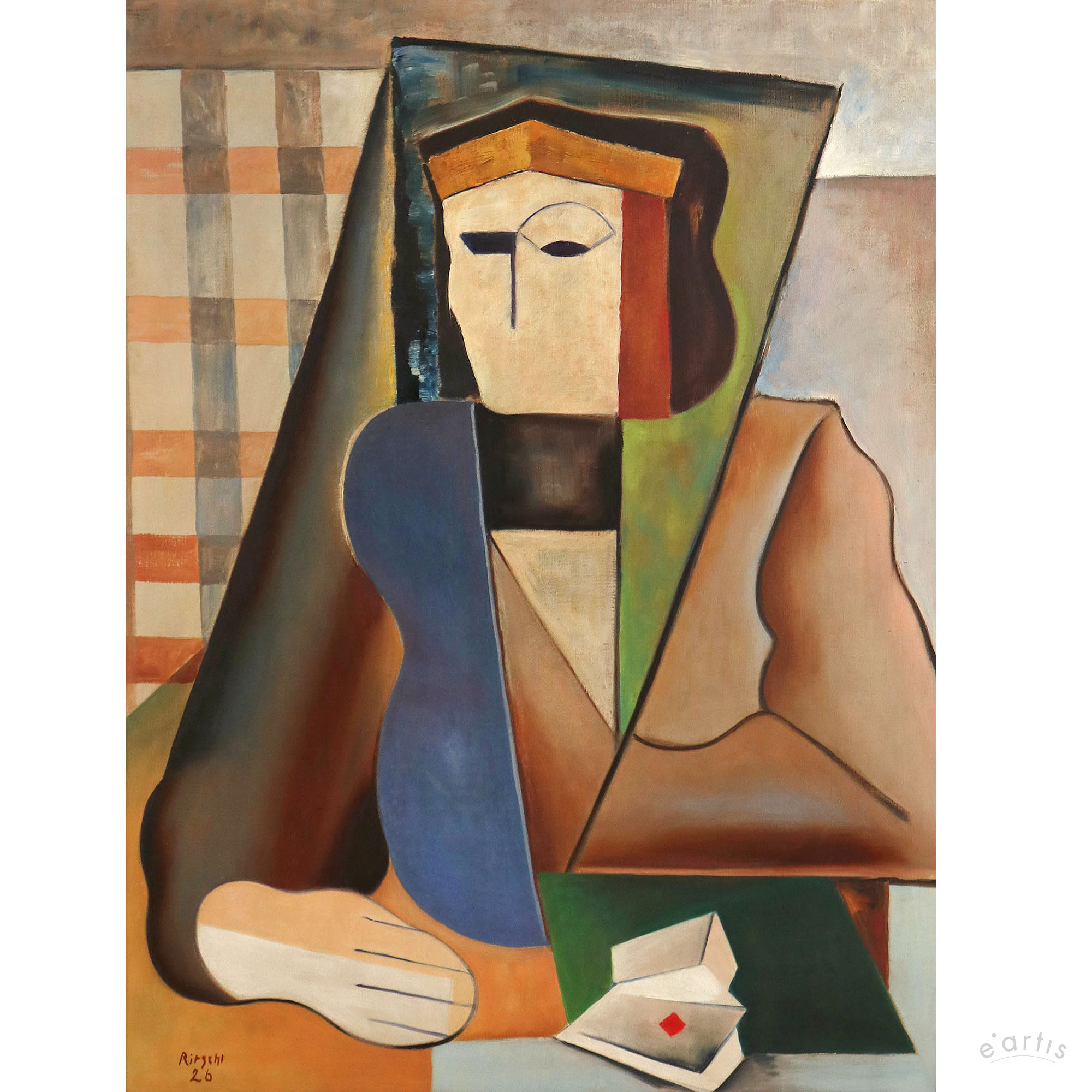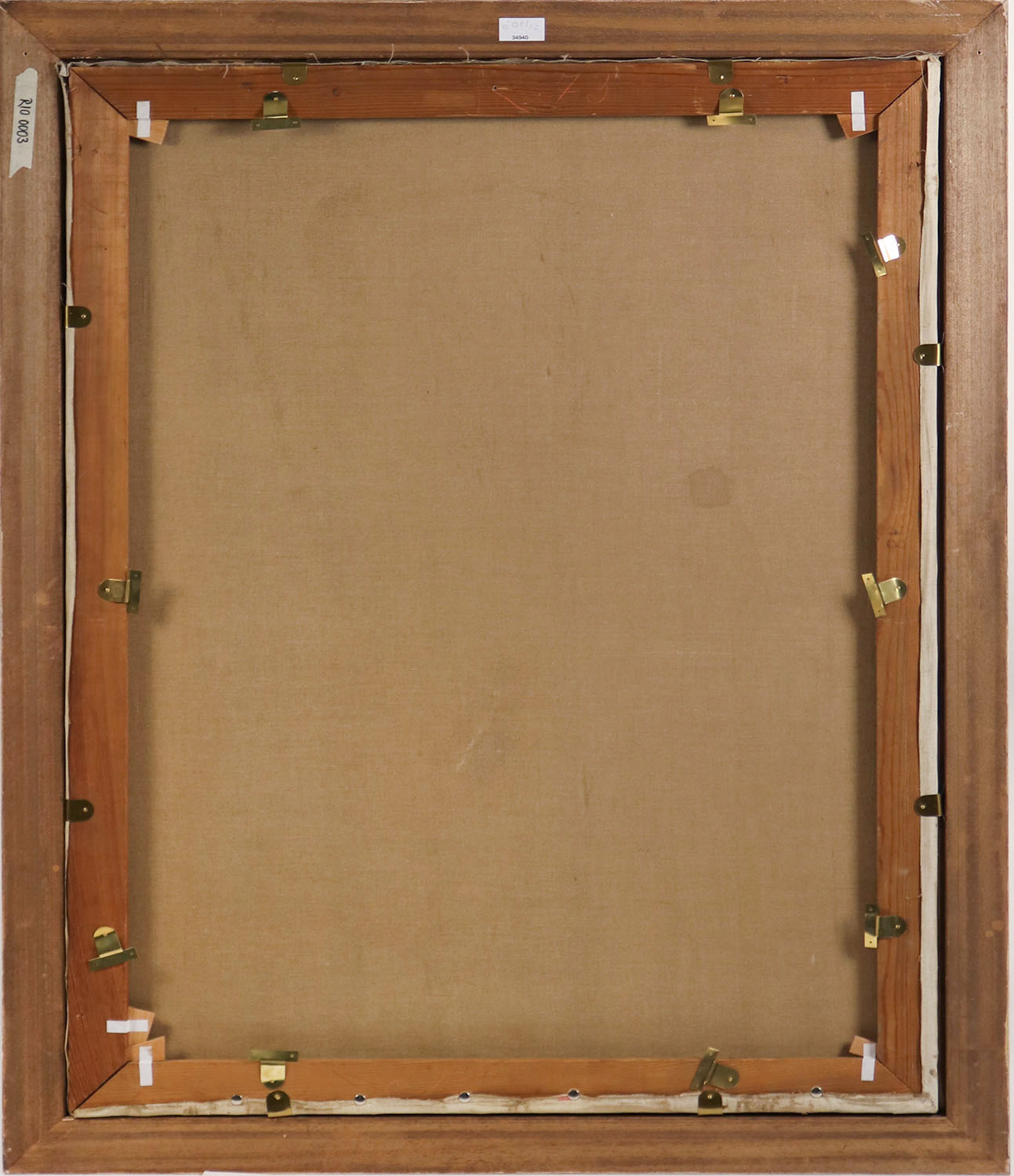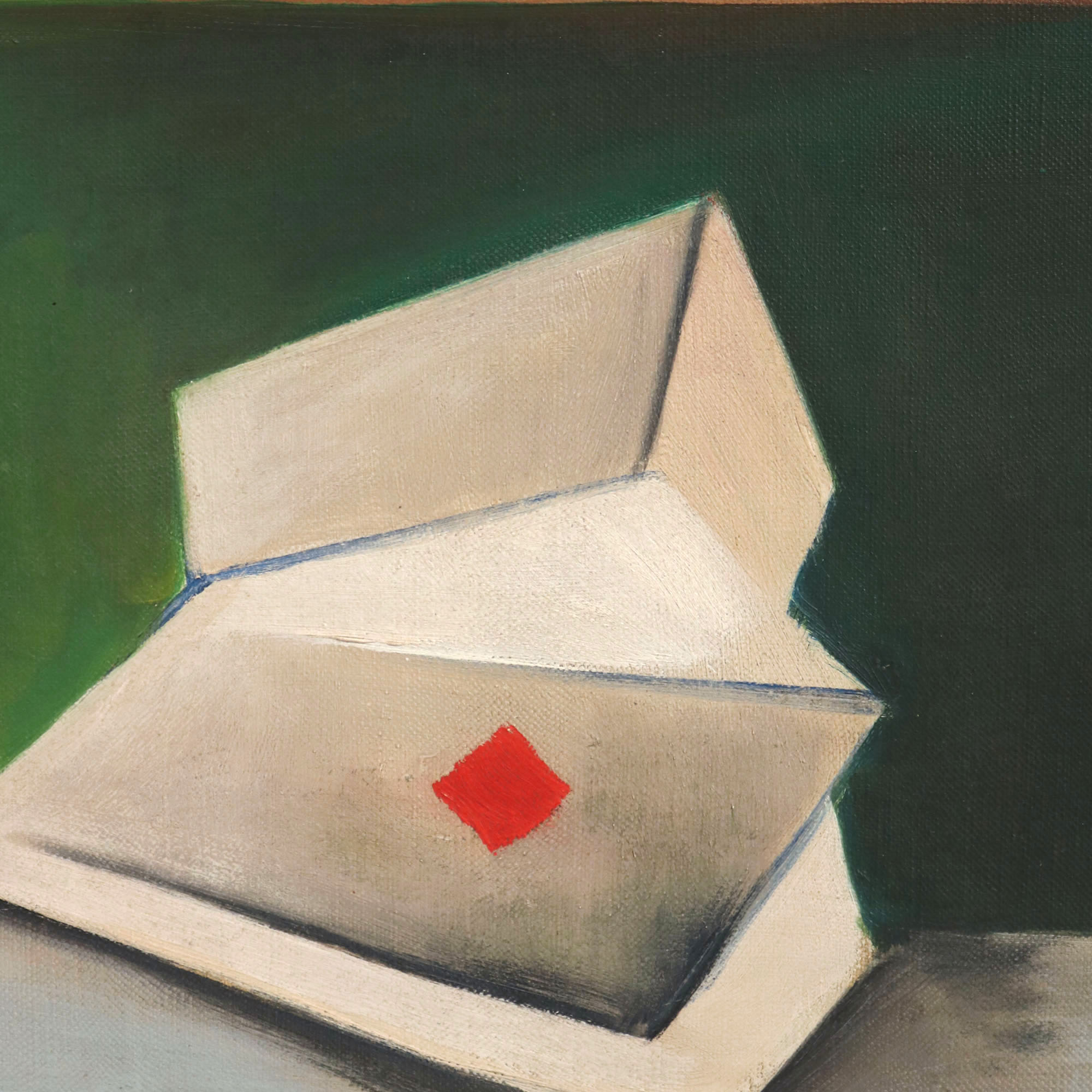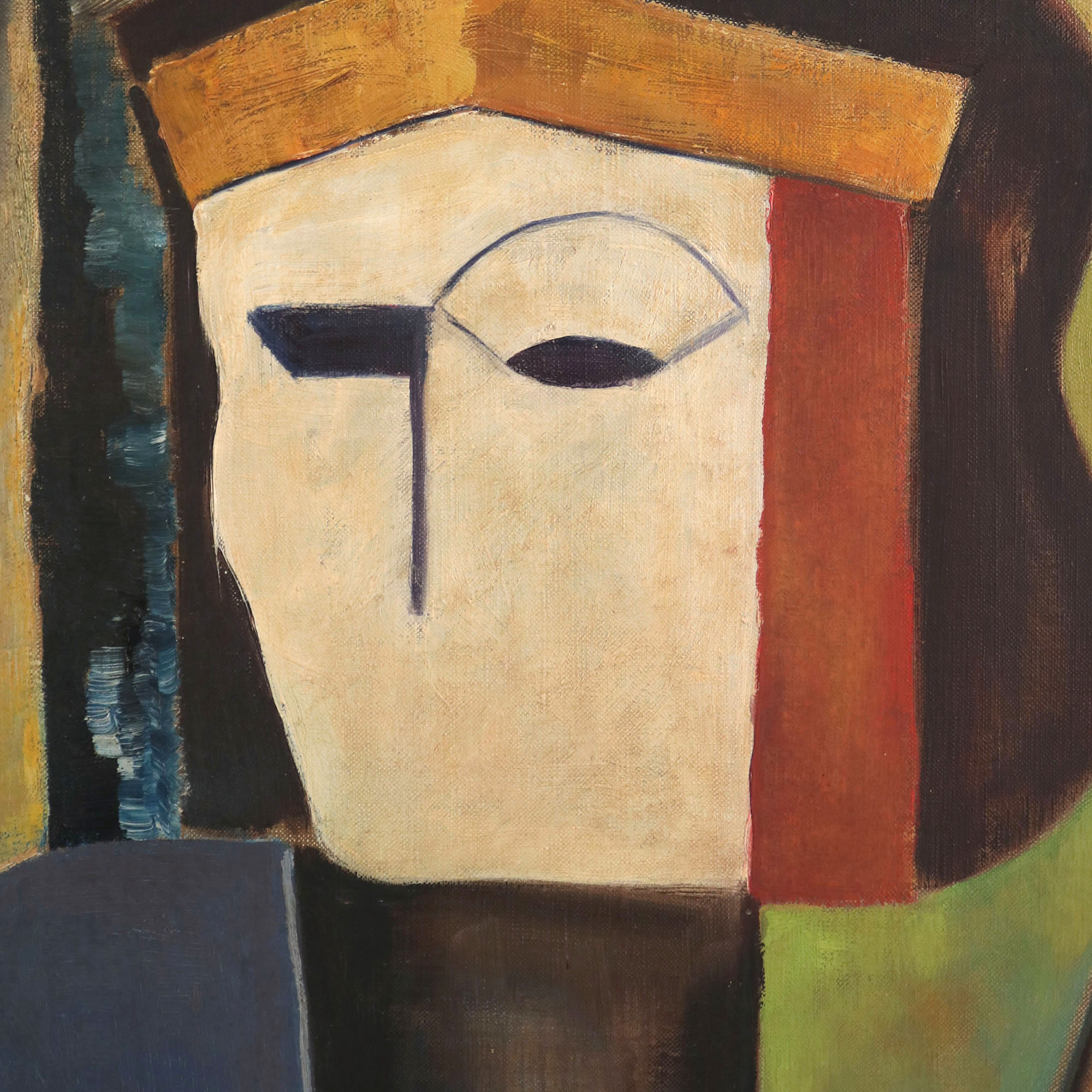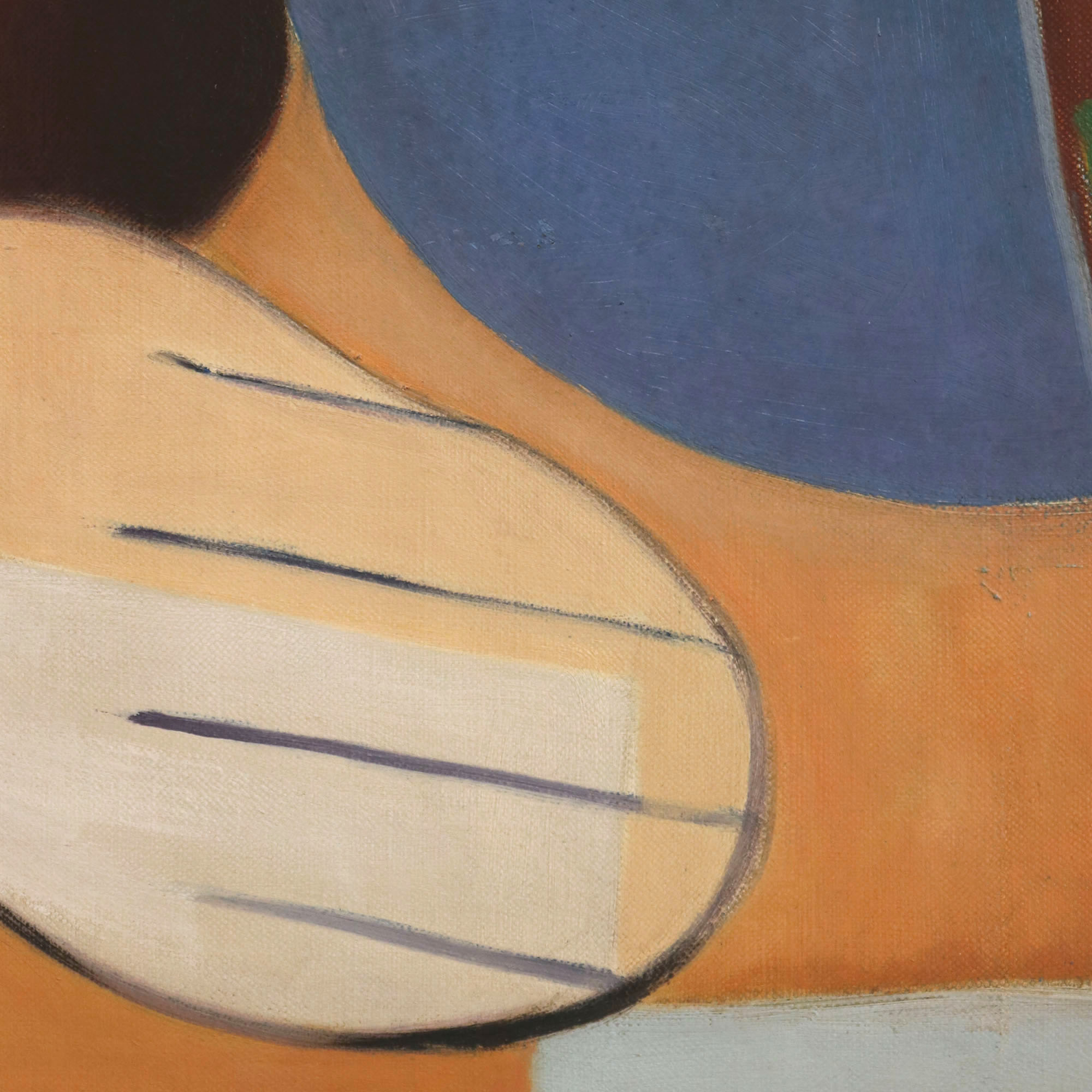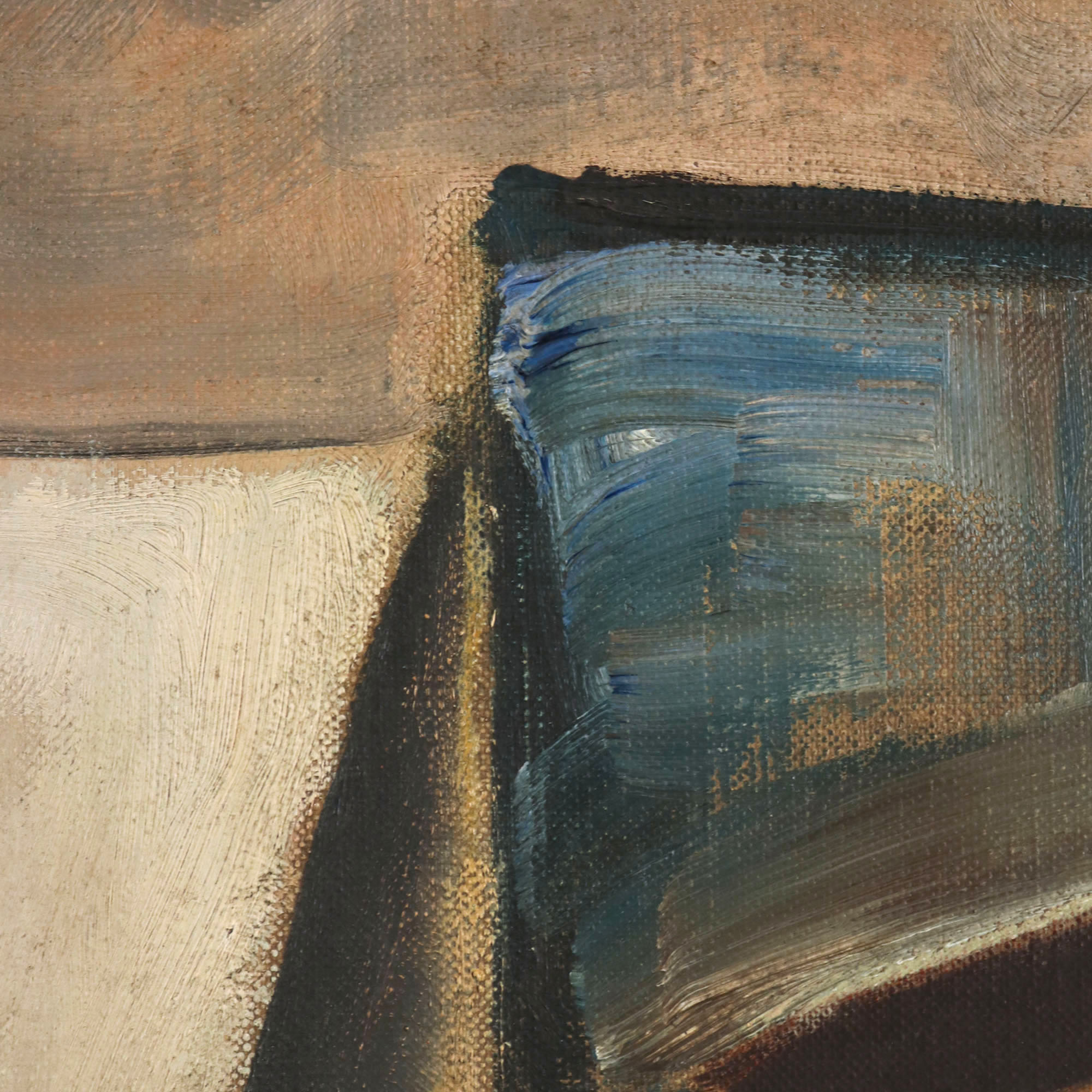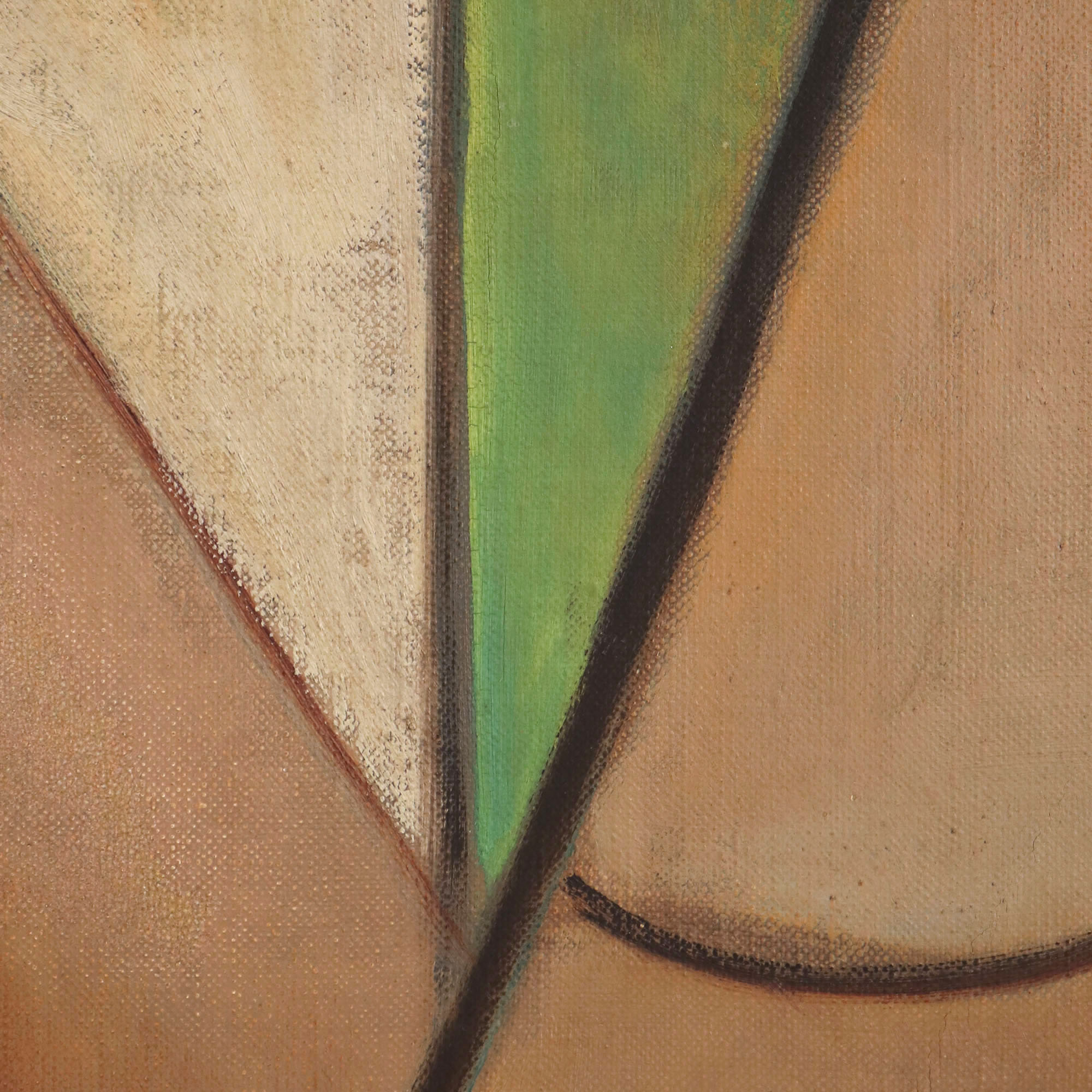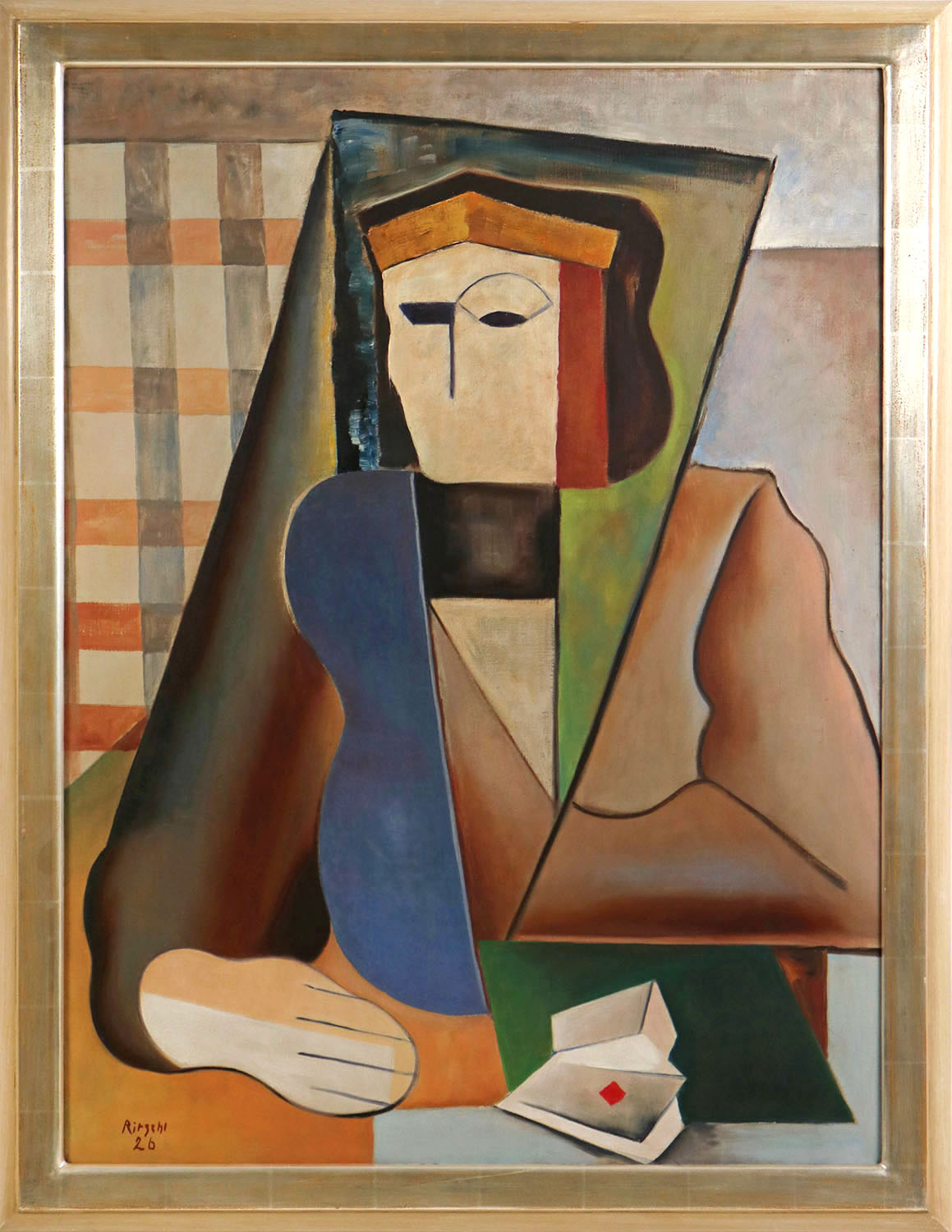| Category | Malerei |
|---|---|
| artist | Ritschl, Otto |
| year | 1926 |
| Title | Kartenleger |
| size 1 |
Canvas
98,0 x 74,0 cm
Frame: 110,5 x 85,5 cm |
| material | Oil on canvas |
| edition | Unique |
| signature | Signed and dated lower left: Ritschl 26 |
| publication | Mirus, W. (1973). Otto Ritschl. Das Gesamtwerk 1919 – 1972. Stuttgart: Kohlhammer Verlag, Nr. 1926/5 |
| Provenance | Collection Germany |
Otto Ritschl Kartenleger (1926)
- Unique and hand signed from 1926
- Cubist-surreal work with geometrically composed figure and maps
- Important painter from Wiesbaden - modernism and abstraction
- Listed in the catalogue raisonné
€28,000.00*
- The artwork is available immediately and can be viewed at any time in our gallery.
- Ready for shipment within 2 days.
- Free shipping within Germany.
Informations
condition
|
The Painting is in a very good state of preservation Expertly restored (lower centre canvas tear, approx. 11.0 cm, glued, smoothed and retouched). |
artist
|
Otto Ritschl wurde 1885 in Erfurt geboren und verstarb 1976 in Wiesbaden. Ritschl war ein Hauptvertreter der abstrakten Kunst in Deutschland, der in Wiesbaden lebte und arbeitete. Ritschl schrieb bereits als 14-Jähriger sein erstes Theaterstück. Nach einer militärischen Grundausbildung war er ab 1905 als Angestellter in Mainz und ab 1908 in Wiesbaden tätig, schrieb aber weiterhin. Nach dem Ende des 1. Weltkriegs wendete er sich als Autodidakt der Malerei zu. 1919 Kündigung er seine Stellung als Bankangestellter und ist fortan als freischaffender Künstler in Wiesbaden tätig. Auf eine neusachliche Phase folgte ab den späten 1920er Jahren eine eigene abstrakte Formensprache, an die er nach einer unfreiwilligen Unterbrechung während des Nationalsozialismus ab 1945 wieder anknüpfte. In den letzten drei Jahrzehnten seines Lebens entwickelte Ritschl seine abstrakten Kompositionen fortwährend weiter, sodass diese nach einer geometrischen Phase in fluiden Farbräumen im Spätwerk mündeten. Ritschl stellte zweimal auf der Documenta in Kassel und auf zahlreichen weiteren Überblicksausstellungen aus und erhielt mehrere Preise und Auszeichnungen. Zudem stand er im engen Austausch mit anderen Künstlern in seiner Zeit, unter anderem mit Alexej von Jawlensky, Willi Baumeister und Ernst Wilhelm Nay. Quelle: Dieser Text basiert auf dem Artikel Otto Ritschl aus der freien Enzyklopädie Wikipedia und steht unter der GNU-Lizenz für freie Dokumentation. Bei Wikipedia ist eine Liste der Autoren verfügbar. |
e.artis safety
Art trade is a matter of trust.
Features and remarks
Here you have the opportunity to acquire an original oil painting by the important Wiesbaden artist Otto Ritschl.
„Otto Ritschl is one of the protagonists in the development of abstract painting in the twentieth century.“
Peter Iden
In the 1920s, Ritschl became intensively involved with avant-garde artists in France and Germany. Alexej von Jawlensky, who had been living in Wiesbaden since 1921, became a friend and supporter, the painter studied the work of Georges Braques more intensively and later travelled to Paris, where he explored the works of Fernand Léger, Synthetic Cubism and Surrealism.
In the work presented here, it becomes wonderfully clear how he succeeds in integrating his initially objective painting into the formal language of Cubism. Ritschl had already integrated card games into the composition in some of his earlier still lifes. Sometimes it seems as if he has broken down Paul Cézanne's famous series of paintings of card players into their individual parts and reassembled them.
Ace and King
Here, where the figure joins the object or becomes it, the abstraction is already much more advanced: The isolated "dealer", presented in frontal view, may be laying a solitaire, but only a single card, the ace of diamonds, lies visible on the green table diamond.
The geometric surfaces and curved contours, composed entirely of matt, mostly thinly applied oil colours, offer us less a real player than a card figure reaching for the hand itself.
The head is reminiscent of the king of the French hand, the position of the hand of the often highly stylised representation. Here, too, we only see the upper half of the figures, which are usually mirrored on the real hand. Diamonds are the lowest colour, but even these have their value when played artfully.
The oil painting is listed in the catalogue raisonné under no. 1926/5.
At the request and expense of the purchaser, we will be happy to obtain a written appraisal.A valuable unique piece by the well-known German protagonist of abstract painting - take this opportunity!

